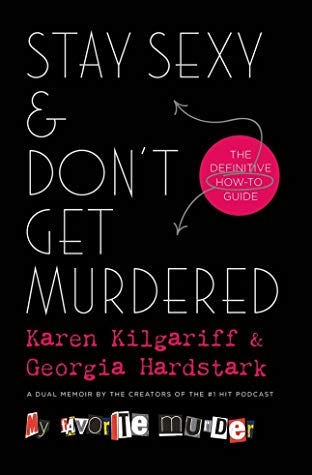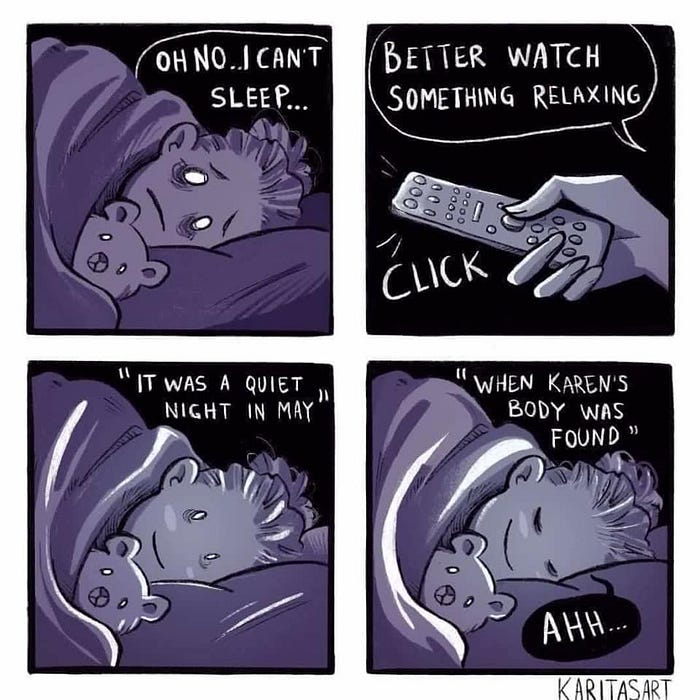

Cover art for Stay Sexy & Don’t Get Murdered from publisher Forge Books
I recently finished reading, err, listening (Audible) to “Stay Sexy and Don’t Get Murdered.”
While I am a Gen X’er with a black belt in Dr. Michael Baden’s Autopsy, have childhood memories of watching countless episodes of Unsolved Mysteries, and have a penchant for anything on the Investigation Discovery (ID) and A&E channels, I am not a devout follower of the co-authors’, Georgia Hardstark and Karen Kilgariff, “My Favorite Murder” podcast.
I know, right? What is wrong with me? I tried to listen to MFM a few times but found they deviate from the true-crime topic far too often for my liking to discuss the day-to-day filler of their lives. To be fair, this was my assessment after listening to only a few early episodes.
I am fascinated with forensics and am a true crime enthusiast. Until recently, I would go to bed, easing myself into dreamland while listening to things indicative to City Confidential’s “It was a lovely day in May when they found Steve’s body along the river’s edge.”

Karítas Gunnarsdóttir (Karitasart Instagram)
But I had to limit my true-crime listening to daytime hours after my significant other complained he was too horrified to fall asleep most nights — laying there, wide awake at 3 a.m. as I dozed, listening to the grisly details of a murder unfold and how they went about solving it. This was after 20 straight nights of listening to Gregg Olsen’s Dangerous Dozen, a 20+ hour true crime anthology detailing some of the most gruesome true crimes ever investigated. Now we fall asleep to “fake” horror (No Sleep Podcast or fictional mystery audiobooks).
Technically, I am a Murderino in the sense that I am right there in MFM’s key demographic of listeners/readers and share many of the same macabre interests. **Sometimes, I joke, implying with my 30+ years of true crime knowledge and my degree in biotechnology, “I could make the Easter Bunny look like he did it.” I’m the inappropriate weirdo who talks about this stuff (crime-solving and odd medical or forensic factoids about human remains) at dinner parties, putting people off their meals. Hey, this is what happens when you invite a true crime fan/introvert to your dinner and expect her to make idle chit-chat with strangers.
Also, don’t invite me to watch anything with you and expect me to keep quiet when I see something glaringly (medically or forensically) inaccurate. I’m also going to throw out a couple of guesses about how the person died before the “CSI” team figures it out 20 minutes later and dance about in my seat when I’m right.
Anyway, I gave the SS&DGM book a shot. I expected it to be a more edited, concise version of their podcast, focusing more on true crime than their own lives. It wasn’t. Apparently, I neglected to focus on the fine print of the cover just below the authors' names. It specifically states, again in very tiny text, ‘a dual memoir.’ My mistake.
Yes, they drop a few informative gems on how the narrative surrounding victimhood needs to change. But most of the book is a memoir about their respective childhoods as latchkey kids with eating disorders, kleptomania, drug use, alcoholism, the red flags to look out for when you first start dating a guy, being branded the crazy ex-girlfriend, the crappy jobs they’ve worked, therapy, therapy, therapy, self-care, and therapy.
After a while, I thought they should have reconsidered and titled it, Stay Sexy and Get A Therapist.
It was as though they took a short book on true crime insights and a more detailed two-person memoir and crammed them together like ill-fitting puzzle pieces. This isn’t a definitive how-to guide, as the title suggests. It is a dual-person memoir told in alternating chapters. I had different expectations of where I assumed the book would go after the first chapter, “F*ck Politeness.”
I did enjoy the read. I wasn’t satisfied with the minuscule amount of true crime they covered and felt a hint misled by the larger-than-life title. I know. Mine is not the popular opinion.
Nevertheless, I love listening to strong women share their opinions on how the system should be revamped to consider the victims' needs, and I had hoped for more of that in this book.
For example, they cited how the Canadian authorities poorly handled their approach towards women, warning them how to comport themselves in public during the Bernardo/Homolka murdering spree in the late 80s and early '90s—the implied narrative, putting the onus on the potential victims. I can’t do the section justice. It is fantastic. You’ll have to read/listen to “Karen’s Lessons from Listeners and Canadian Aldermen.”